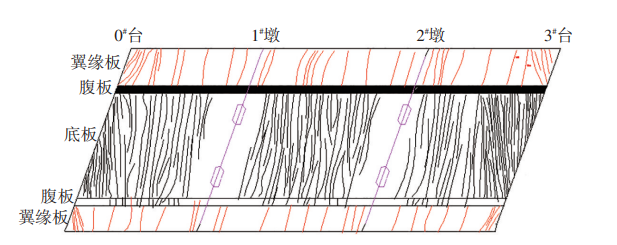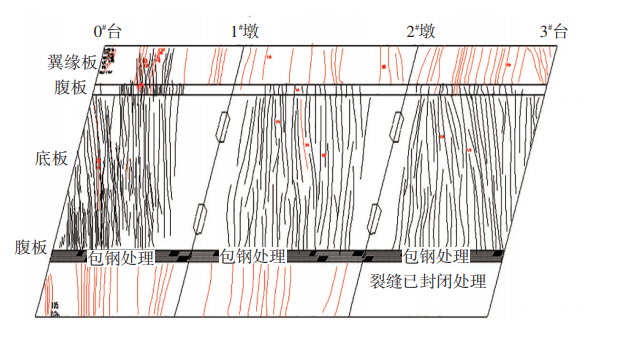Bridge Crack Reinforcement
Pre-stressed Carbon Fiber Plate
After the bridge is reinforced with prestressed carbon fiber plates, the load-bearing capacity is significantly improved, and the reinforcement effect is significant, achieving the purpose of reinforcement design
A reinforced concrete continuous beam bridge was built in 1991, divided into left and right sections, each with 3 spans, with a combined span of 13.15m+16.0m+13.15m. The design load is steam-super 20, hanging-120, the beam height is 85cm, and the oblique angle is 34.31°. The lower structure adopts concrete column piers, concrete light bridge abutments, and rectangular plate rubber bearings. The single bridge deck has a full width of 13.6m, and the horizontal layout is 1.1m (maintenance road) + 12.5m (travel lane), and the bridge deck is paved with asphalt concrete. A section steel expansion joint is set on the top of No. 0 and No. 3 bridges on the left and right bridge decks.
The main diseases are concentrated on the continuous slab girder of the upper structure of the girder. There are transverse cracks in the flange and bottom plate of each span of the left and right bridges, and some of the cracks extend to the web. The maximum width of vertical cracks in the web is 0.40mm, and the maximum width of the cracks at the center of the steel bar is 0.30mm; the maximum width of the transverse cracks in the bottom plate is 0.37mm; the maximum width of the flange cracks is 1.0mm.


Longitudinal direction
The longitudinal flexural ultimate bearing capacity of the main beam bottom plate meets the requirements, and the longitudinal flexural bearing capacity of the flange plate does not meet the requirements. The maximum crack width of the main beam bottom plate and flange plate exceeds the limit, and the normal service limit state cannot meet the requirements.
Cross bridge
The transverse flexural ultimate bearing capacity of the main beam meets the requirements, and the normal service limit state meets the requirements.
Reinforcement measures
The main problem of the bridge is that there are a large number of longitudinal cracks in the beam bottom plate and flange plate and the maximum crack width exceeds the limit. The beam bottom plate and flange plate are longitudinally reinforced with prestressed carbon fiber plates.
End
After the bridge is reinforced with prestressed carbon fiber plates, the load-bearing capacity is significantly improved, and the reinforcement effect is significant, achieving the purpose of reinforcement design